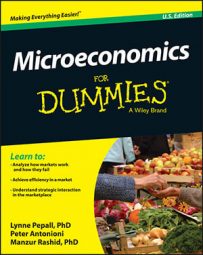The important difference between the model of an oligopoly and the model of a perfectly competitive market is that firms in oligopoly can influence market outcomes. As a result, firms behave strategically and try to anticipate the strategic interactions among each other. This means that they form beliefs about what their rivals might do in response to their acts.
This behavior makes oligopoly a useful jumping-off point for looking at even more complex markets, and for understanding how the concepts of game theory are relevant to microeconomics.
The first thing you have to do when looking at oligopoly is describe the key characteristics that make a given market an oligopoly. Besides having only a few firms in the market, here are some other features to note:
Firms have market power and can affect market prices: The demand curve facing a firm in this case is downward-sloping rather than a flat line.
Firms, as ever, are rational profit maximizers: They set prices or quantities where marginal revenue equal marginal cost.
Firms interact by anticipating how their rivals will react to their decisions: These guesses about their rivals' behaviors affect the price that a firm will charge or the quantity it will supply.
Entry into the market typically incurs sunk costs: Sunk costs are costs, such as advertising or product development, that have no recoverable value after the cost has been expended. These make entry costly and exit not costless.
Consumers are rational utility maximizers
One of the most important of these conditions is that entry and exit is no longer costless. Oligopoly often comes about as a result of the existence of barriers to entry. In a perfectly competitive market, entry and exit are assumed to be costless. Changing this condition makes a large difference, because rivals can base their behavior on each other's actions without worrying about potential competitors who aren't currently in the industry. Thus firms in an oligopoly can make economic profits in the long run, whereas perfectly competitive firms cannot.
Barriers to entry are anything that imposes a non-recoverable cost on entering a market, and they come in many kinds:
Innocent: Large capital investments that have no resale value. For example, setting up a manufacturer of aircraft costs a lot of money for specific plants and equipment.
Strategic: Incumbent firms may engage in costly behavior strategically designed to keep entrants out, including preemptive moves.
Prohibitive regulations: Such as the result of government allowing only a few licenses to trade in that industry. For example, in 1927 the U.S. government nationalized the airwaves and since then licenses their use. Wireless broadband providers like Verizon and AT&T must bid for the spectrum licenses they use. Television broadcasters, on the other hand, are issued licenses by the Federal Communications Commission.

